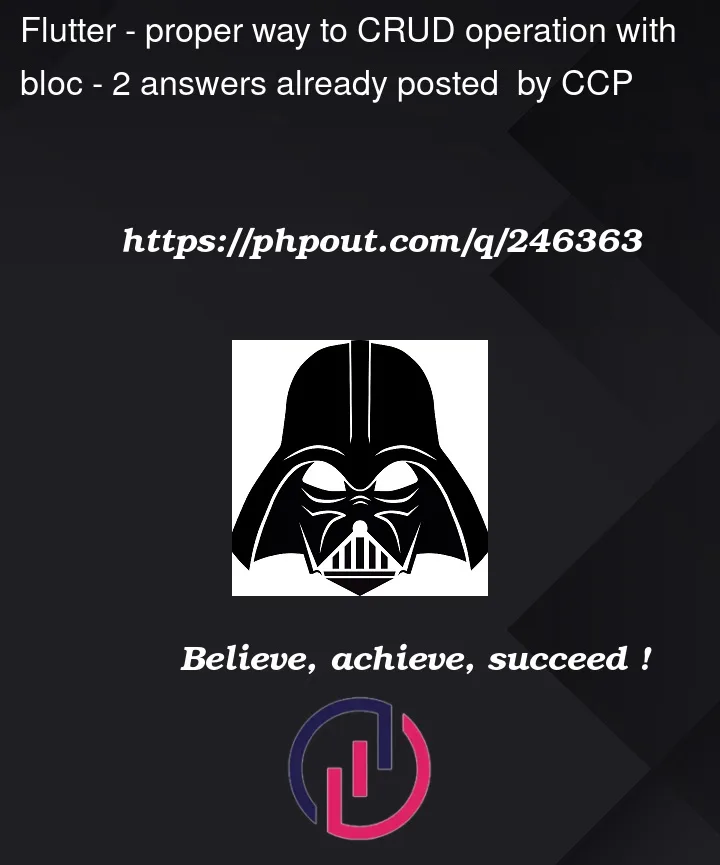im new with bloc i already read the documentation and its well documented so it’s not hard to understand it but it’s different in practical. I wonder if there is any better approach to add, update, delete with bloc like this?
class TodoBloc extends Bloc<TodoEvent, TodoState> {
TodoBloc() : super(TodoState(todos: const [])) {
on<TodoEventAdd>(
(event, emit) {
emit(
state.copyWith(
todos: [...state.todos, event.todo],
),
);
},
);
on<TodoEventDelete>(
(event, emit) {
List<TodoModel> _todos = [...state.todos];
_todos.removeWhere((TodoModel todo) => todo.id == event.todo.id);
emit(
state.copyWith(
todos: _todos,
),
);
},
);
on<TodoEventIsCompleted>(
(event, emit) {
List<TodoModel> _todos = [...state.todos];
final newTodo = _todos
.elementAt(event.index)
.copyWith(isCompleted: event.isCompleted);
_todos[event.index] = newTodo;
emit(
state.copyWith(
todos: _todos,
),
);
},
);
}
}




2
Answers
You can do it like this,
Your code will look good and will be readable and testable in this way.
don’t think there is a better approach to accomplish this; it works perfectly in the ideal flow.
However, have you heard of Cubit? If not, I recommend checking out a good article on it. Cubit can simplify your code by reducing the need for event classes. It functions similarly to Bloc and works seamlessly with the same Widgets (BlocProvider, BlocConsumer, BlocBuilder, and BlocListener) while providing the same functionality. The key difference is that Cubit doesn’t require you to define events. Instead, you define class functions for different actions (such as add, update, and delete), and these functions emit states that automatically update your UI accordingly.
Below i’m putting code for cubit corrosponding to your bloc code:
Here i have just used a single state
TodoStateas you have did in the bloc, but i don’t recommend that, you should have different state to handle things like a state to handle errorTodoErrorStateand other.TodoLoadedStateetc..